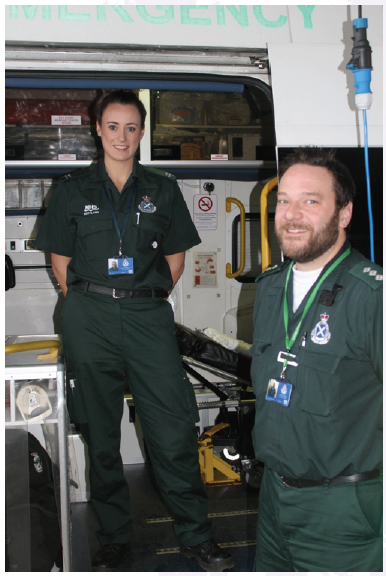Realising Realistic Medicine: Chief Medical Officer for Scotland annual report 2015-2016 appendix
Case studies of applying the personalised, patient-centred Realistic Medicine approach across Scotland.
Scottish Ambulance Service
Initial thoughts
The Scottish Ambulance Service ( SAS) is supportive of Realistic Medicine. It has a number of programmes underway that support its principles and will continue to look at ways to deliver its services to the people who need it with shared decision making and risk management.
What have we done so far?
Specialist paramedics have an enhanced set of skills in line with the Scottish Government's 2020 vision to keep people away from hospital settings. They have different referral rights - which means they can send patients to urology, surgery, neurology etc. as appropriate and not just general admission at A and E. Treatment at home or anticipatory care planning with the patient is an option that is becoming more available. SAS is developing from a transport service to a service that can provide different responses to reflect the situation. Specialist paramedics are being trained to postgrad level to ensure they have the enhanced clinical skills necessary to safely manage risk. SAS is working with locality hubs including around falls pathways to provide an effective service for frail elderly people in the community. The Active Independent Living Improvement Programme is national strategy that ties in with Realistic Medicine. SAS provides data to create reports for areas of practice. This allows a mapped landscape of Scotland which can be analysed to see where there is variation in addressing falls in area.
The SAS is also undertaking a deep dive - looking at falls on a case by case basis to map variations. Management of risk has also been strengthened by staff not on active duties engaging and improving the response of hospitals and falls co-ordinators.
The COPD falls pathway which was set up in 2012 is also managing risk appropriately - a team of community respiratory physiotherapists are now in place with seven-day referrals from GPs/district nurses/ SAS with an EH postcode or General Practitioner. This initiative has ensured 400 regular hospital attendees - patients with two or more hospital admissions in a year - are now being more often treated at home.
The personalised approach is being extended to direct mental health with an initiative in Edinburgh, East and Mid Lothian where a Community Physciatric Nurse can provide assisting with assessment via telephone and arrange for patients to then be followed up in the community or at Royal Edinburgh hospital if required.
The SAS is also responding to cardiac arrests with the fire service which is proving a real success in first responder rates. The FLOW model is also trying to streamline scheduled care patients and low acuity unscheduled transport so that SAS can send the most appropriate kinds of vehicles - cars not ambulances where this is appropriate.
What next?
The SAS is continuing to look at how it can improve its shared decision making with the patients its sees and how it can manage the risk appropriately to avoid harm and waste and keep people out of hospital settings where they can. Falls co-ordinators are being recruited and the data will be used to train the workstream, and educate staff around falls referrals. It is also looking at variation and data to see where it can improve services and looking at working collaboratively in a number of initiatives to improve and innovate.
Final thoughts
Many of the SAS initiatives predate the launch of the Realistic Medicine framework, however this strengthens the resolve of SAS to continue to act within its principles. SAS looks forward to realising Realistic Medicine with the support of CMO and other health and care professionals and is delighted to share its knowledge to help others from other fields.
Paramedics in NHS Lothian.

Contact
Email: Catherine Calderwood
There is a problem
Thanks for your feedback